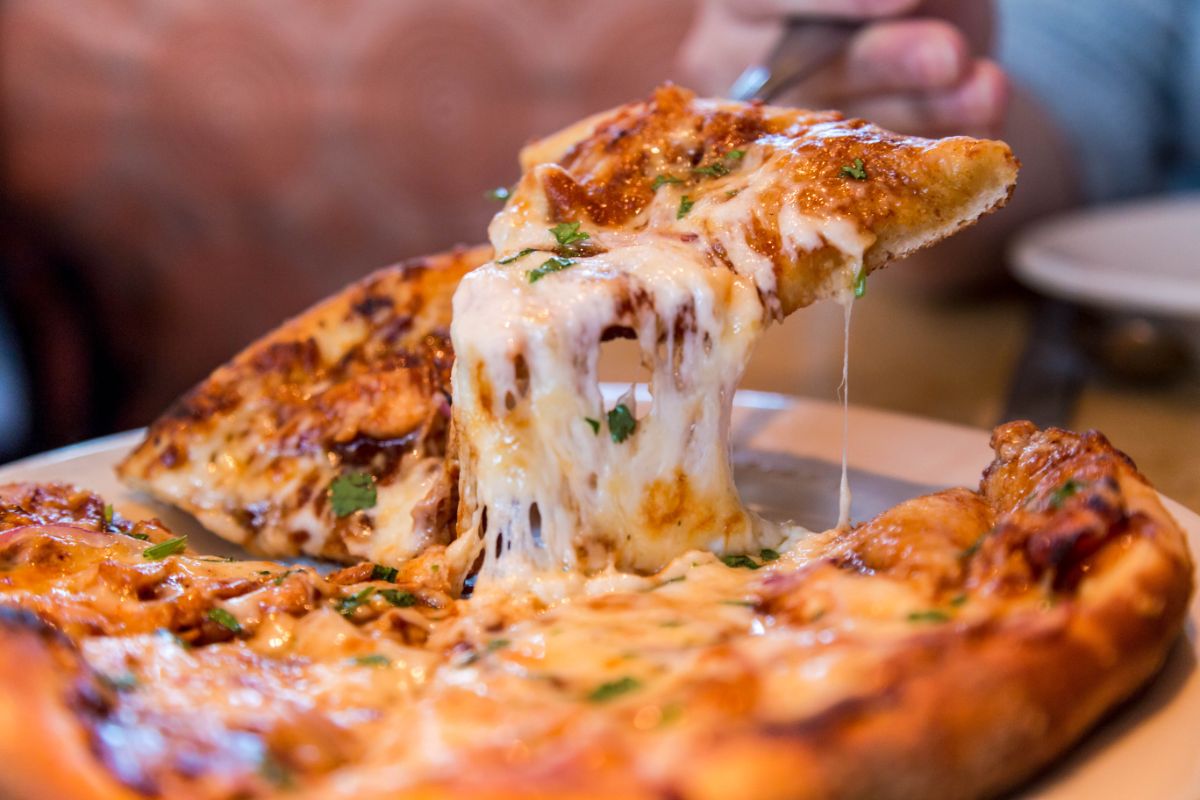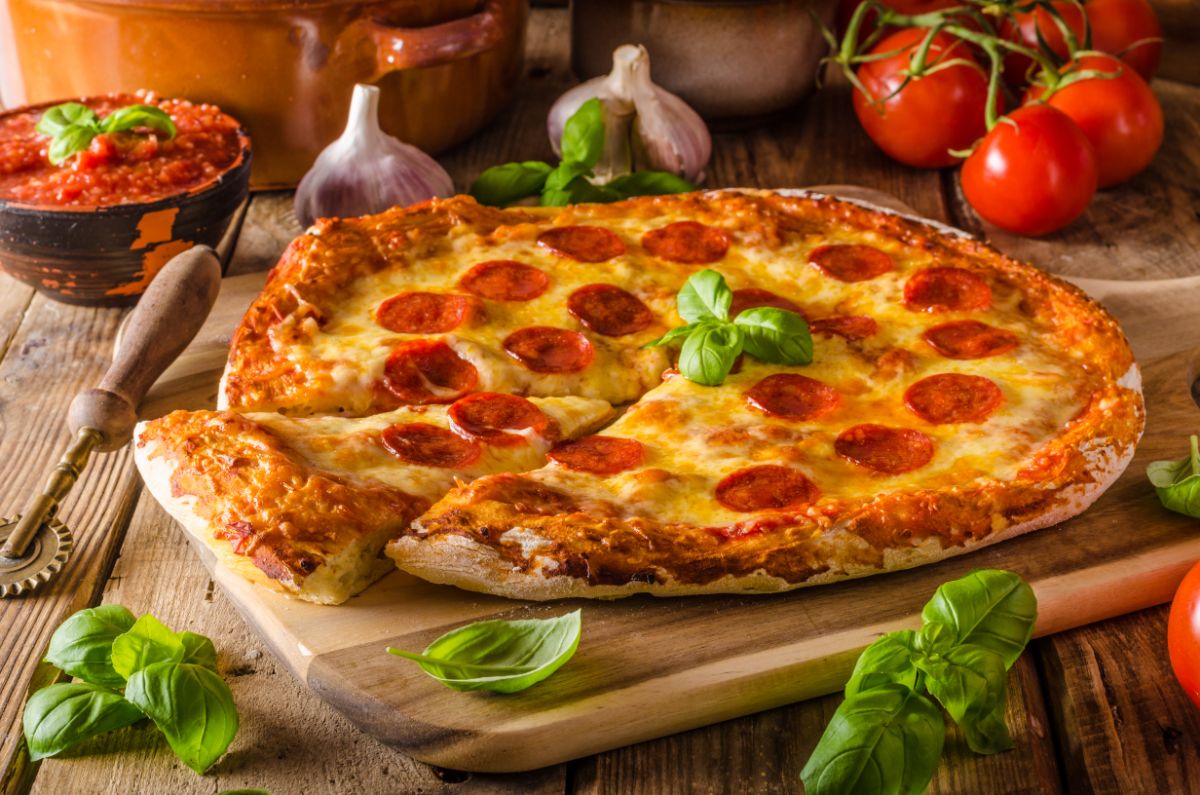There is nothing worse than taking a nicely browned pizza out of the oven, with the toppings all ready for you to bite into, only to discover the dough is undercooked. If you cook it longer, you risk burning the toppings, so what will happen if you eat an undercooked pizza?

Is Raw Dough Safe to Eat?
When a family spends time in the kitchen creating freshly baked goodies, there is always the temptation to take a bite of the raw dough sitting there ready to become a cookie, cake, loaf of bread, or tasty pizza.
This temptation should be ignored as tasting or eating unbaked products that are intended to go in the oven, can make you sick. The CDC (Centers for Disease Control) states dough and batters, which are considered raw, should be avoided.
*This article may contain affiliate links. As an Amazon Associate I earn from qualifying purchases. Please take that into account.
- Dutch oven
- Large mixing bowl
- Measuring cups and spoons
- Bread thermometer (fancy or a budget one)
- Scoring lame
Extra (nice to have):
- Kitchen scale
- Dough scraper and bowl scraper (yes, they are different)
- Cooling rack
- Baking stone (you don’t need a dutch oven if you use this)
👉Learn how to make bread and pizza with this awesome book.
My pizza cooking changed in better when I started to use a pizza baking stone. I highly recommend you have one in your oven. It is also great for baking bread on it.
Undercooked Pizza Dough May Contain Bacteria
A person doesn’t think of flour as raw food, but in reality, it is. It has to be treated to kill germs it may contain such as Escherichia also known as E. coli.
Grains can contain harmful bacteria that contaminate the grain while it is still growing in the fields. Germs can also contaminate it during other steps of its processing. Even though flour is bleached and ground, these steps do not kill bacteria.
The bacteria which can be on your flour can only be killed if it is cooked or baked. For this reason, the CDC says you should never eat raw dough or batter.
Safe Food Handling Practices
These are a few safe food handling practices for you to follow when cooking with flour or any other raw ingredient:
- Do not eat or even taste raw batter or dough. This instruction applies to cookies, pizza, biscuits, craft doughs, tortillas, and pancakes.
- Children should never be allowed to eat or play with raw dough; this instruction includes those used in craft projects.
- Before you eat cookies, cakes, or pizza, ensure the dough has been properly baked.
- Follow all package instructions or those in your recipe and ensure you are using the correct baking temperatures and baking for the time stated in those instructions
- Keep your flour and eggs, or other raw foods, separate from your ready-to-eat foods.
- Clean up all your baking tools thoroughly by running them underwater and using dish soap. Make sure you wash your hands thoroughly as well using soap and water, and any surface these raw ingredients have come in contact with.
Signs or Symptoms from Eating Undercooked Pizza Dough
If you have eaten a pizza that has not been thoroughly baked, or eaten any other underbaked food item containing flour or eggs, you may become sick.
This sickness is called food poisoning, and the symptoms can range from severe to mild. How sick you can become depends on the germ you consumed. E. coli symptoms include severe stomach cramps, diarrhea, and vomiting.
It can take anywhere from three to four days after eating the undercooked pizza or swallowing the germ before you display signs of being sick.
Salmonella is another disease that can result from undercooked or raw foods. This sickness develops much quicker and can exhibit symptoms in as little as 6 hours.
There are times salmonella will not display signs for four days after you’ve eaten the product. Symptoms for salmonella include diarrhea, abdominal cramps, and fever.
These symptoms will last from four to seven days. Treatment is not always necessary, but it will depend on the severity of symptoms if you seek medical attention.
How Can I Tell If My Pizza is Done?

The best way for you to ensure your pizza dough is fully baked is to look at the bottom of the crust. It should appear well-browned and crispy.
The crust on a pizza generally gets crispy during its last one or two minutes of baking. The cheese you have spread on the top should be fully melted.
Other Baking Mistakes with Pizza
Pizza is one of the easiest meals to prepare. Creating the dough is probably the toughest part of the dish, but even this can be purchased in your dairy counter to make the dish even more simple.
Once you have the dough done and spread out on the baking sheet, you top it with your favorites.
But yet as easy as it, making a pizza can present some challenges:
1. Too many toppings
Having too many toppings on your pizza dough can become too heavy to allow the dough to bake evenly. The more toppings you add to the dough, the more time you will have to let for it to bake.
The dough, or crust, is still going to bake at its usual time so you will either have an over-cooked crust or undercooked toppings
2. The dough gets soggy
You can end up with soggy pizza dough for a variety of reasons. The toppings for one can add to much water, or your oven is not hot enough. Before you place your pizza into the oven, it should be pre-heated to the exact temperature on your recipe.
3. Taking it out too early
A lot of times people look into the oven to check their pizza, and it looks and smells amazing. They then proceed to take it out of the oven too early as generally, a pizza will need three to four minutes more baking time after it ‘looks’ done.
You want to make sure your dough underneath all those amazing toppings is fully cooked.
4. Too much cheese
Cheese is one of the favorite toppings for almost all pizza lovers. When it comes to pizza, too much cheese can create a bad pizza. If you put too much cheese on your pizza, it can mean too much grease.
The other problem with too much cheese is that a pizza can only hold so much. If you put too much cheese on, your pizza will fall apart.
If you’ve pulled that perfect looking pizza out of the oven and the toppings look great but the crust looks a bit undercooked, you can fix this problem.
Turn down the heat and lower your oven rack to allow the crust to cook a bit longer. Having undercooked pizza crust and completely finished toppings is an indication there was not enough heat coming from the bottom.
You want to be able to enjoy this delicious dish without becoming sick, so make sure the pizza crust is not undercooked.
